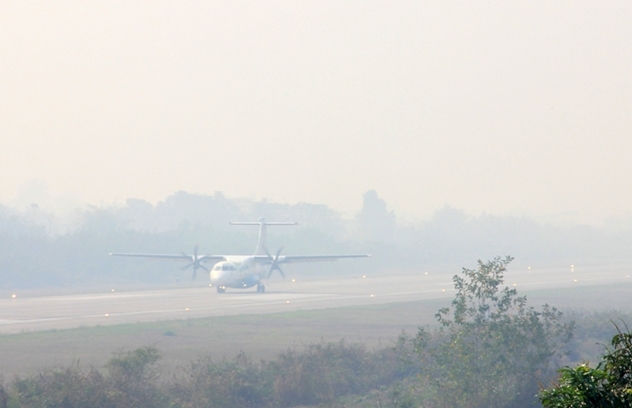Summer Flying Hazards
6/20/2012
Posted in
Flight Training
Tags: summer flying, hazards, thunderstorms, haze, cold-fronts

With summertime here in the United States, the days are longer, the skies seem brighter, and the weather seems to be gentler. Who doesn’t want to go flying on a beautiful, sunny, summer day? Because of this summer has got to be the safest time of year to fly and complete your flight training, right? Well, there are few hazards that pilots need to be aware of that are associated with summer flying. These hazards need to be taken seriously and treated with the respect that they deserve. In this article I’m going to outline and explain some of the most common hazards associated with summer flying in the United States.
Summer Flying Hazards
Written by Jacob Kasprzyk Gold Seal CFI/CFII/MEI, ATP
With summertime here in the United States, the days are longer, the skies seem brighter, and the weather seems to be gentler. Who doesn’t want to go flying on a beautiful, sunny, summer day? Because of this summer has got to be the safest time of year to fly and complete your flight training, right? Well, there are few hazards that pilots need to be aware of that are associated with summer flying. These hazards need to be taken seriously and treated with the respect that they deserve. In this article I’m going to outline and explain some of the most common hazards associated with summer flying in the United States.
Haze:
Haze is a phenomenon that occurs when stable, high, pressure air remains over a geographical area for an extended period of time. This phenomenon is typically caused by a temperature inversion that traps pollen, dust, pollutants, and every other sort of airborne particle underneath it. This problem is made worse by high humidity, which is most common during the summer months. The angle of the sun also plays a factor, such as during the early morning or the late afternoon/evening hours, in which the sunlight amplifies and refracts off the airborne particles. The only real danger of haze is that it can greatly reduce visibility. Haze has such an impact on in-flight visibility that it can take a beautiful, apparently clear, summer day and turn it quickly into an IFR flight. Even if the conditions remain VFR, you can still run the risk of reduced visibility which can make spotting other aircraft in your practice area or traffic pattern much more difficult.

So how do we avoid haze? There are a few things that a diligent pilot should look for if they suspect that haze may be a hazard for their flight.
-
Check your local ATIS, METARs, and PIREPs for current in flight visibility information.
-
Check the humidity (is the temperature/dew point spread a low number indicating high humidity?).
-
Check your prognostic charts to see if you are going to be experiencing a stalled out or slow moving high-pressure system.
-
Use your winds aloft and stability charts to identify any temperature inversions (most notable should be the ones below 10,000ft).
-
Are you flying in an area that has a lot of airborne particulates such as major cities, heavy pollen areas, or areas with significant airborne dust?
-
Avoid flying when the sun is at a low angle.
-
Call a Pre-Flight Briefer (1-800-WXBRIEF)
Fast Moving Cold Fronts:
Fast moving cold fronts act like Mother Nature’s broom. They sweep in fast and furious and blast the current air mass out of their way. A warmer air mass doesn’t stand a chance against the higher density, higher energy of a cold front. The warmer, less dense air ahead of the cold front is pushed outward and upward with the advancing air mass. These cold fronts can easily move at 25kts or greater and create significant wind gusts and turbulence as the air ahead of the front is forced out of its way. You can expect severe turbulence, showery precipitation, and squall lines as a cold front approaches. Cold fronts can extend hundreds of miles and almost always bring with them some sort of flying hazard. If you know one is coming, your best bet is to wait it out on the ground. The air behind the cold front will typically be significantly smoother, clearer, and more enjoyable to fly in.
Next Page